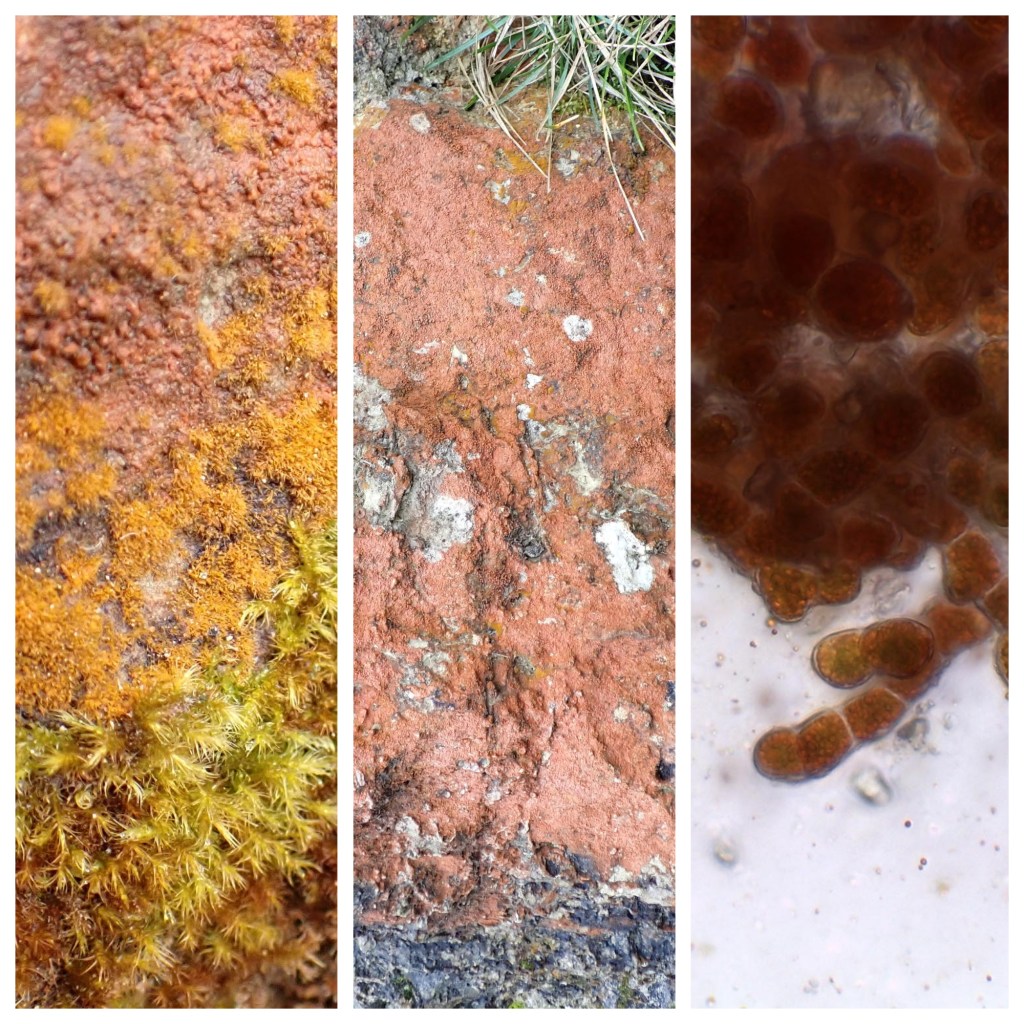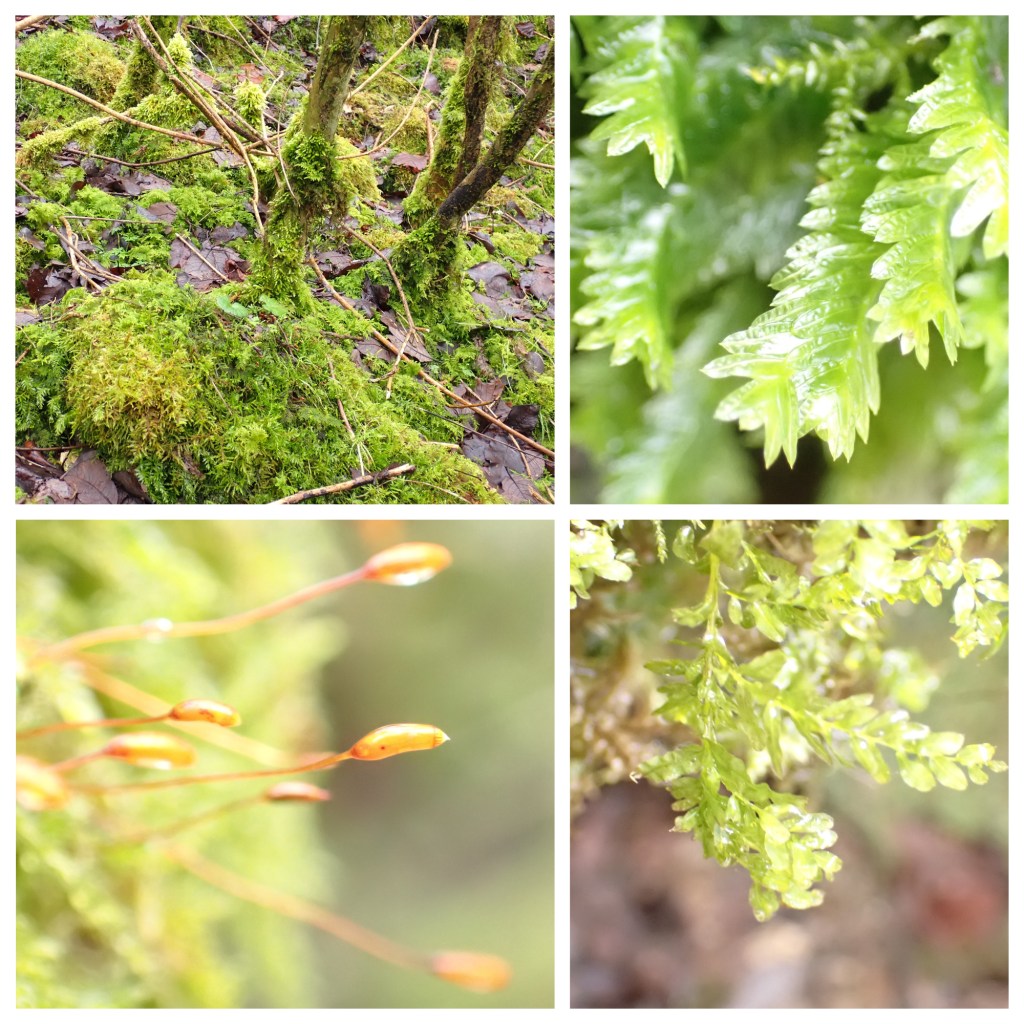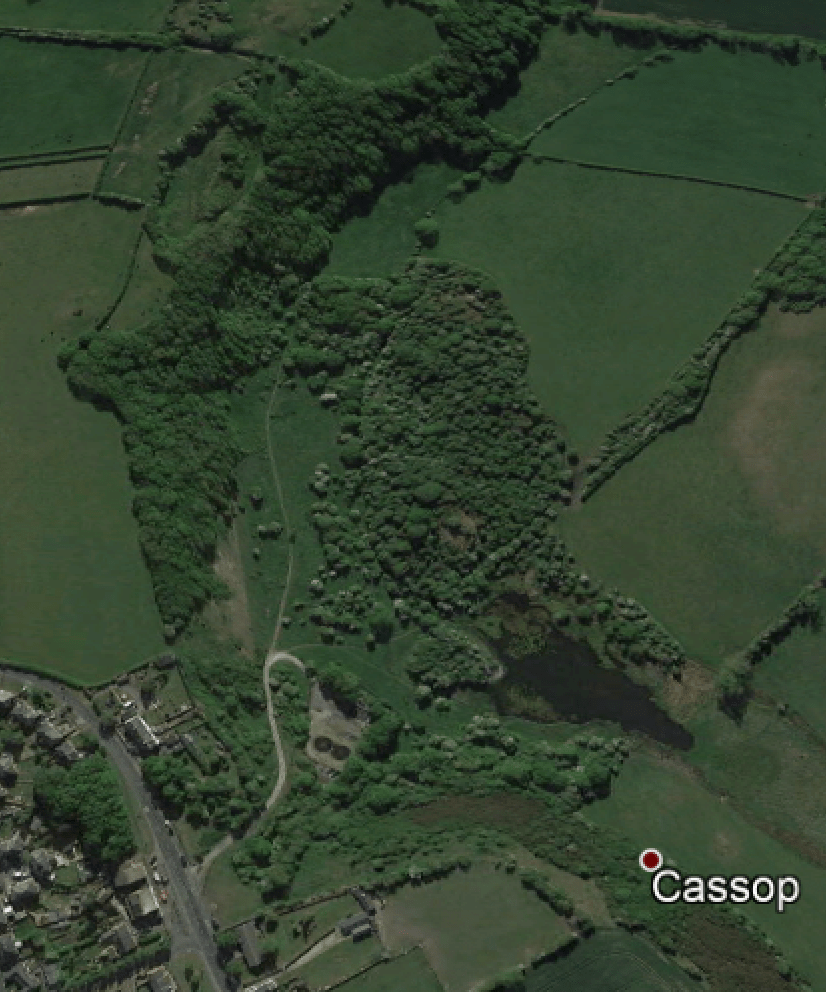I waited till well into February for my next trip to Cassop in the hope that spring would have sprung a little further but another week of snow has set the plant life, at least, back again. Not so the birds, which are singing hell-for-leather as we make our way up and over the escarpment. The bare hedgerows are loud with great and blue tits, sparrows and territorial robins and, to my joy, the larks are back over the fields on either side of the road with the soaring song which marks the start of spring for me. There is a charm of goldfinches up by the farm and redwings scavenge for the last few hips and haws.
Walking along the old wagonway route beyond Quarrington Hill takes us through a tiny limestone quarry, maybe the original reason for the wagonway, and I notice that many of the bare rock surfaces are coated with a brick-red film. There is the usual bright orange filamentous Trentepohlia aurea (a green alga cunningly disguised by carotenoid pigments) but this looks quite different – much less ‘fluffy’ in texture, though the two are growing cheek by jowl. We scrape off a bit to take home and look at under the microscope later and it turns out the brick-red film is another species of Trentepohlia –T. umbrina. It has shorter, more fragile filaments, which break up much more easily, giving its less obviously filamentous appearance.

You can find out more about T. aurea and see micrographs of it for comparison in Martyn’s blog here. It turns out that Trentepohlia umbrina is an indicator of alkaline environments, and has been used to demonstrate the presence of alkaline dust pollution around quarries in Estonia (Marmor & Degtjarenko, 2014) so it’s in the right place!
As we dropped down into Cassop vale through the woods, I’d hoped that there might be a few early celandines in flower but mosses, liverworts and lichens still dominate the colour palate. The moss gardens on the hawthorn and elder scrub between the muddy grassland and the north-facing slopes of the old quarry are an even more vibrant green than they were at the end of February, taking advantage of the extra sunlight. The slopes below the quarry feel very like the temperate ‘Celtic Rainforest’ on the west coast of Argyll, where my brother lives. The trees have feather-moss leggings and miniature caves in the limestone rubble are home to a rich variety of other mosses and liverworts. When the current lockdown restrictions lift, I’ll try and persuade a local bryophyte expert to come here with me.

Lemon-yellow Xanthoria parietina on branches tries to trick us into thinking buds are bursting already but it’s just an illusion. With the weather so much warmer than it was three weeks ago it won’t be long now, though. The Jelly ear fungus growing on elder trees near the pond has the look of belonging to someone rather old and wrinkled after the cold weather.

The ground is even more churned up than last month, now it has thawed out, but at first sight there is no sign of the resident highland cows, apart from plenty of cow pats! I feel braver about wandering round the east side of the pond for a look at the margins but we soon spot the herd – or rather they spot us! They turn out to be young bullocks, a little curious but mainly hanging around like a bunch of teenagers – they remind us of our sons and his friends, waiting around for a lift home from an ‘Enter Shikari’ gig ten years ago! Their teenage appetites are helping remove a lot of dead-looking grass and bullrushes, letting the light in for the new year’s growth.
The lack of new growth at the moment has its advantages, laying bare the structure of the site – the spoil and rubble around the pond tell of its mining origins. What is perhaps more surprising is the depth of humic material which has developed on top of the spoil, in places. It’s the kind of soil I’d willingly see in my allotment!

I had a bit of a scamble around on the hillside beneath the old quarries mindful that, after the recent rain, I should probably have been wearing a hard hat when up close to the rock face! There are signs of limestone flora in the shape of fresh green Betony leaves but also a lot of scrubby brambles and young ash and hawthorn, which look to be in danger of smothering this in places. By March there should surely be more new plants to see….
And, just because I’ve been messing around with Google Earth for work this week, here is an aerial view looking west down the vale. The pond is clearly visible in the bottom right hand corner, the old quarries are below the wooded ridge towards the upper left hand side and the path running down the middle passes straight through the limestone grassland I’m so looking forward to.

Marmor L. & Degtjarenko P. (2014) Trentepohlia umbrina on Scots pine as a bioindicator of alkaline dust pollution. Ecological Indicators, 45, 717–720.




[…] the two species of Trentepohlia that we noticed growing on the wall of an abandoned quarry in her post about the visit. However, I still managed to find plenty to amuse me in the pond […]
[…] colour that, under the microscope resolved into a different species, Trentepohlia umbrina (see “Cassop Vale, Febrary 2021”). Above there are blackish patches of Gloeocapsa alpina (see “The mysteries of Clapham […]
[…] written about Trentepohlia aurea before – it’s the green (really!) alga which partners with fungi in many lichens, so any fungal […]